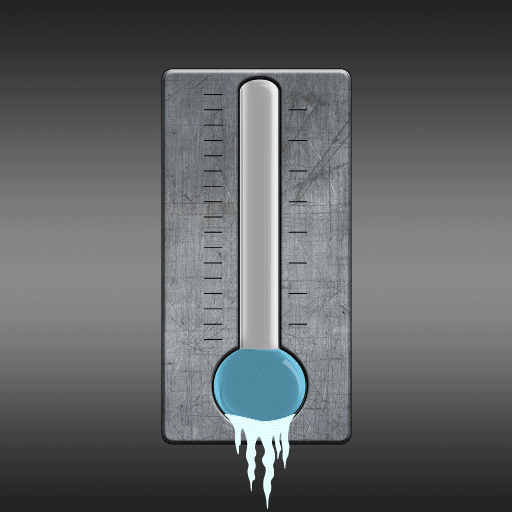by Annie | Aug 11, 2010 | Game Design
Make a game. Any game. No limitations. Go. That’s exactly what our class has been working on for the past couple of weeks. In small teams, we’ve been tossing around ideas for games that push the boundaries and bring something new to players. Since we only need to pitch the game idea rather than create it, anything is possible. Some teams went with space games, others with fantasy games or epic journeys. As it turns out, school is the perfect place to come up with crazy and innovative game ideas. In school, there are no budget constraints or pressure from the higher-ups. Just pure design. Thus, despite the stresses of the day-to-day projects and general craziness, I’m reveling in this moment, as I know that this broad scope of creative license is not easy to come...
by Annie | Aug 10, 2010 | Game Design
Technology is great, but nothing can top the power of the human mind. Given the proper conditions, humans can learn just about anything and tackle just about any problem. Take proteins, for example. Proteins are made up of extremely complex configurations of amino acids that fold in many different ways. Given a large amount of processing power, computers can figure out how protein folding works. Given a game like Foldit and a dedicated following of players, humans can outperform the computers, which begs the question – what else is possible through games? Imagine an arsenal of science, math, literature, history, and psychology games that leverage the power of the human mind to tackle the world’s biggest problems. The cure for cancer could be lurking in the next great game. The possibilities, my friend, are...

by Annie | Aug 9, 2010 | Game Design, Illustration Station
Believe it or not, it’s been raining here all weekend, and it’s still coming down. Summer rain in Vancouver is rare, so this is quite an aberration. However, I barely had time to notice. I was indoors all weekend, and I had planned it that way. There seems to be no end to the amount of projects I have on my plate, from simple drawings to complex level designs, and everything in between. Thus, my weekend was spent staring at the many windows open on my computer screen, glancing over occasionally to see the rain falling outside the real windows. Most of my projects are currently rough drafts in progress, but here’s one of the smaller projects, a health bar for an in-game interface. Of course, this isn’t a traditional health bar that shows the main character’s health. Instead, it shows the status of the environment, say, for a game in which you have to stay cold. You’ll have to create your own game idea to go along with...
by Annie | Aug 6, 2010 | Game Design
As part of the VFS admissions process for game design, I had to come up with a single game idea and create a one-page pitch. Since classes have started, however, it’s been a completely different ballgame. As musicians know, it takes countless hours of practice to become a great musician. Likewise, in order to become a great game designer, you must constantly create new game ideas. Over the past five weeks, I’ve been tasked with creating so many game ideas that I’ve lost count. Some I created on my own, most were created with partners or teams, and all came with certain purposes and restrictions. Some ideas have taken weeks to develop, while others had to be crafted within mere minutes. According to Malcolm Gladwell, it takes 10,000 hours of practice to become a master at something. At our current pace, we’ll likely surpass the creation of 10,000 game ideas before the year comes to an end. Whether or not that makes us great game designers, time will have to tell. Now, on to that next game...
by Annie | Aug 2, 2010 | Game Design
Since the field of game design is still in its infancy stage, things change fast and often. Games were once created by small teams of people with a passion for gaming but no formal training. Now, more and more, game designers, programmers, and artists are entering the field with years of schooling and experience. Soon, students will have access to game design training as early as middle school. Baltimore County Public Schools (BCPS) just announced plans to incorporate video game development education into its curriculum. To prepare teachers for the program, BCPS will implement a series of “gamification boot camps” to educate teachers on the technology behind video games. This technique of incorporating game technology with STEM (science, technology, engineering, and mathematics) is quickly catching on, increasing student engagement and interest in core subject areas. Be The Game, a game design training curriculum for high school students, was developed by the Institute of Urban Game Design in 2005 and has rapidly spread from its original school in Washington, DC, to six schools across the US. This new trend may be yet another game changer for the field of game design. As access to training becomes more prevalent, more indie games created by younger designers will soon hit the market. We may not have highly effective educational games just yet, but we do have highly motivated students ready to create them. Let the games...

by Annie | Aug 1, 2010 | Game Design
As a teacher, I wore many hats every day. Teaching aside, I regularly took on the roles of nurse, psychologist, event planner, secretary, statistician, and fellow kid. Being able to wear many hats is also one of the reasons I love studying game design. As a game designer, I must juggle the demands of budget and schedule with the creative elements of cinematography, storyline, and character and level design. I am by no means an expert, but as you may well know, I always welcome a challenge. This past Friday, I finally went to see the movie Inception. Though it was the third Friday since the movie’s release, the theater was still packed. I won’t spoil the movie for those of you who haven’t yet experienced its intense storyline, but suffice it to say that the movie has a lot in common with game design. Inception explores the possibilities of the human mind, and, in particular, of its dreams. Like game environments, dream worlds must be carefully architected. Though pieces of the dream or game may come from real life inspiration, the ultimate dream or game world is a conglomeration of the best parts of the real world. This weekend, I took on the role of a level designer. Well, kind of. My assignment was to analyze an existing game level and create a level map detailing the environment and obstacles. Sounds simple enough, right? Well, keep in mind that you have to know the level well enough to draw the map (i.e. you have to play the level over and over again). Then, you have to draw the level...


